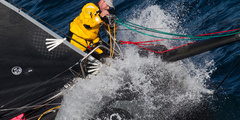In the previous part of the article we looked at three of the six teams of the current regatta: Chinese rookie Team Sanya and two favorites: Camper ETNZ and Groupama. Today we will return to the remaining three.
Stars and Stripes
Of course, the most prominent guys left behind are the guys from PUMAled by Ken Reid.
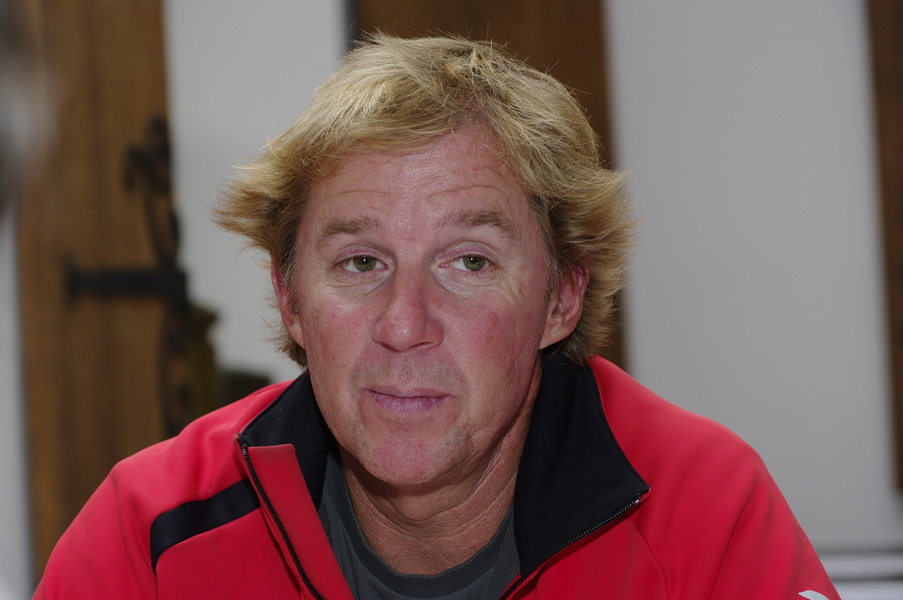
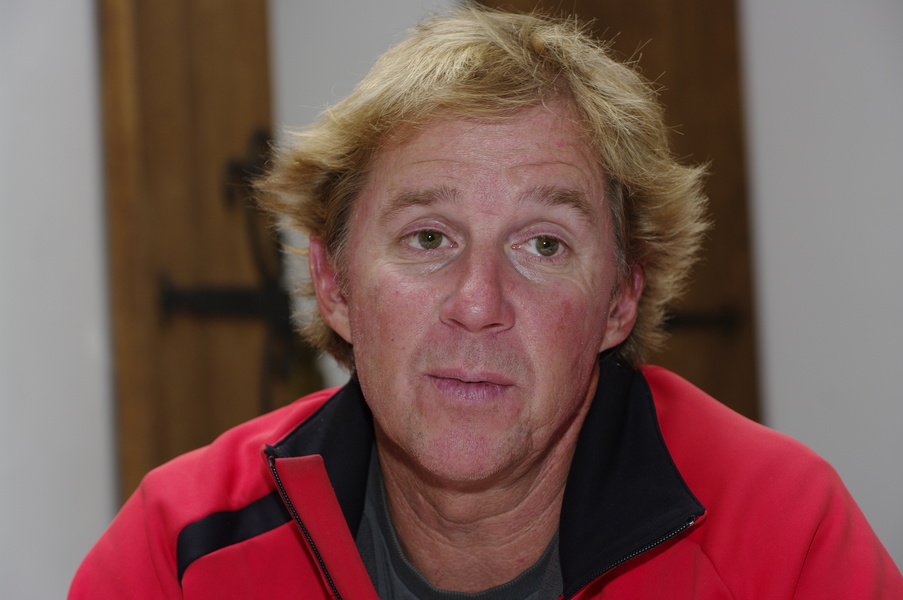
They were also one of the clear pre-start favorites. The service record of their brave boss is quite impressive: participation in the last VOR race 2008-2009, double participation in the America's Cup, double possession of the title of «Yachtsman of the Year» in the USA. «Destroy!» - as the unforgettable Piglet used to say. Under Ken and his navigator Tom Addis: successful participation in VOR aboard Telefonica Blue (victory in two stages), victory in the famous race.
The boat for PUMA was made by the same Mr. K., whose feather (or what's right - whose mouse? whose computer tablet?) belongs to the design of three yachts of the current race. Due to the «boxing» rules, the differences in the TTX boats are extremely small and the whole competition of the designers is only in the little-known amateurish look of details.
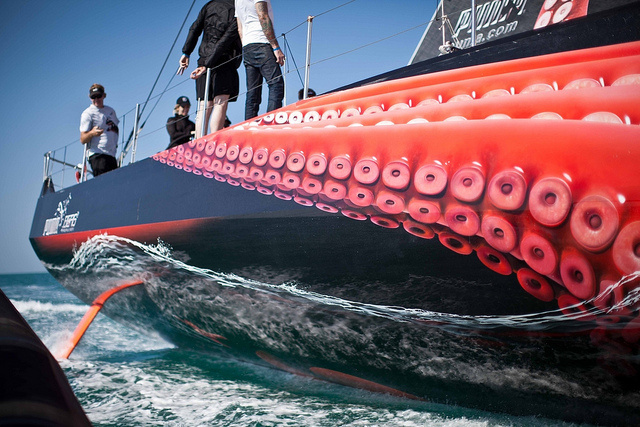
In today's world of sailing racing there are four main types of technical rules for yacht classes. What do they represent?
- Rigid monotype (today the abbreviation OD is quite common, which means One Design). Yachts are built according to one approved design (very often only at one firm or under its license), theoretically they are completely identical and are chased, of course, only when they arrive (whoever came earlier is the one who won).
-
«Box» (or «box») rules. These rules draw a kind of hard virtual «box»in which the» boat should «be placed. They specify possible maximum and minimum lengths, displacement, weight of ballast and so on, depending on the imagination of class creators. Permitted construction materials and even features of the technology of hull sections or rankings may be specified. The yachts are very similar to each other, but have some subtle differences. Races, of course, are only held when they arrive. (
Somehow such classes can be compared to car «Formulas» - the idea is the same.) - Free classes (Open classes). These rules give the designer much more freedom of action, specifying in one way or another only some basic parameters of a yacht (say, length), and otherwise not restricting it. Yachts can be very different, but racing is almost always the same here.
- Handicap classes. There are several fundamentally different systems of measurement and handicap, according to which each yacht receives a certain inherent racing score (measured in linear terms - feet or meters), indirectly indicating her performance. Yachts can be very different, so races are recalculated - the actual time of the course shown at the finish is multiplied by a correction factor directly dependent on the racing score. For even greater accuracy, yachts are grouped by the size of the racing score. There are different measurement and handicap systems, the most popular of which are IMS, IRC, ORC. Russia has its own RS 2000 measurement system.
As mentioned above, VO 70 class rules refer to boxing rules. They very rigidly fix the mass of geometric and weight parameters of the whole yacht as well as its individual parts.
The craftsman's skill here is not in choosing unusual proportions or strengthening the energy structure of a yacht, but in finding seemingly discreet but very important technical solutions.
In addition to the above mentioned cheekbone from the stem itself, there is one novelty - a cunning Argentinean used so-called curved dinghies on his boats. What is this and what is it for?
The key to achieving high sailing speed today is considered to be not a large sailing area, not a small displacement or even a long waterline.
The restoring moment is what is at the top of the corner today! It is the restoring torque that opposes the tilting force that occurs on sails and that determines how long a yacht can carry full sailing without leaving the waterway.
And what does the moment depend on? The weight and shoulder of the lever. It is undesirable to increase the weight (i.e. the ballast of the yacht). Shoulder? You don't want to go deep on the ballast keel either. Why not turn it to the wind? That's how the swinging or swinging keel was born (sometimes in foreign literature it's called «turbokilas» due to the effect they give). Everything is fine, but what can replace the side resistance previously created by the keel? The answer is simple - with a retractable centreboard. This is how almost all speed boats - the swinging keel and two retractable centreboards - are arranged today. 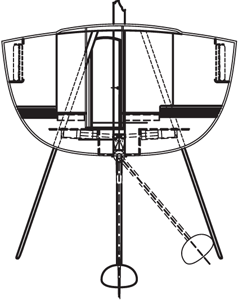
Now it's clear that in acute courses a lot depends on the centreboard. And since they are now two (for different tack), they can be asymmetric, which allows you to raise their effectiveness. And so Mr. K. suggested (but I'll be fair - it's not his idea, on yachts of other classes such a centreboard has already taken root) to apply bent (but not strongly - there is a restriction in rules) in a transverse direction of centreboard. What does such a centreboard do? On its concave (inner) side, the flow goes at a higher speed - which increases the thinning, and, therefore, the lifting force. The yacht gets less drift. Such dinghies are now used on PUMA as well. However, they did not save the boat from problems - in the first stage it lost its mast and came to Cape Town under emergency armament.
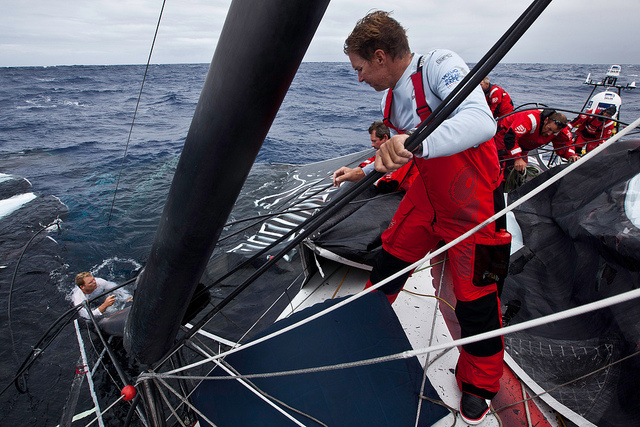
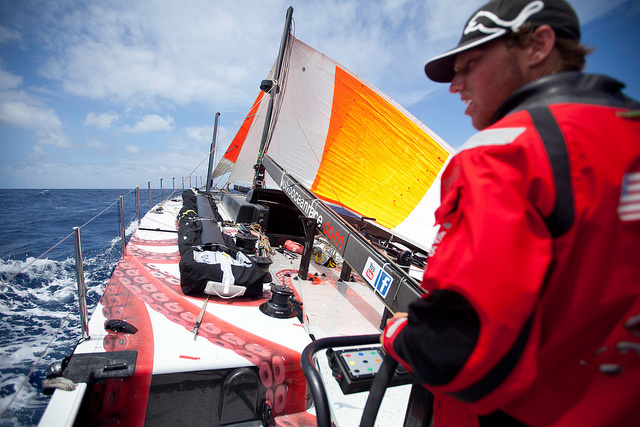
Phone, phone.
Strong enough team. Telefonica the Spaniards put up.

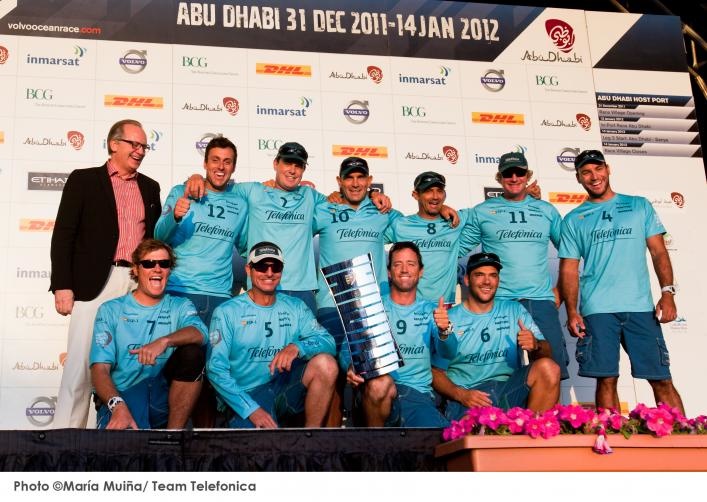
She was headed by Iker Martinez, one of the country's leading yachtsmen.
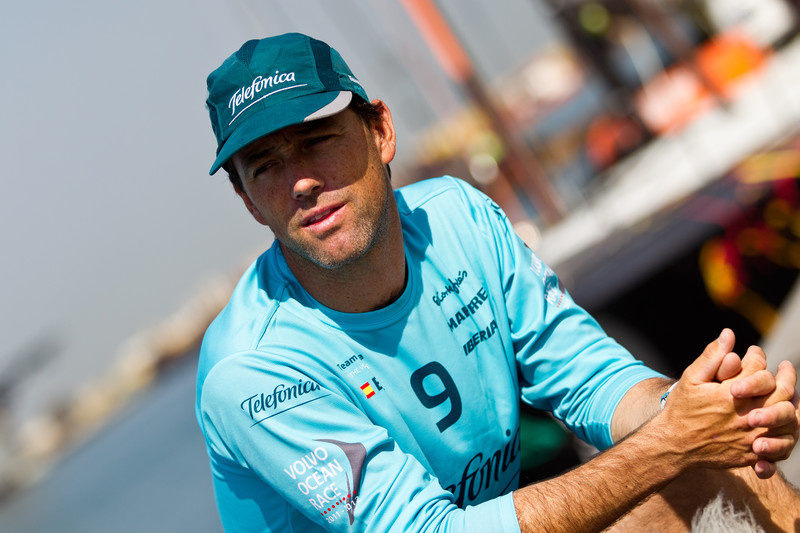
The yacht is still designed by the same Mr. K. - and there's hardly
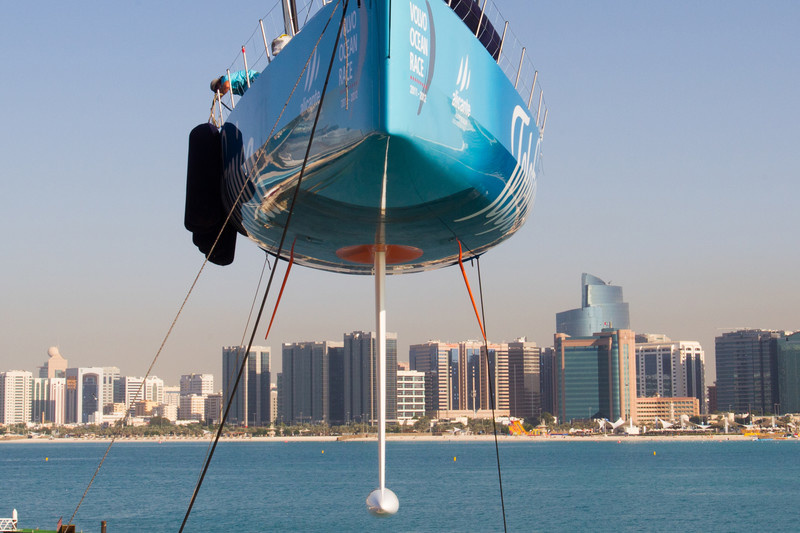
The sixth participant of the regatta was team Abu Dhabi, the skipper who was invited by Ian Volker, who last time headed the team Green Dragon.
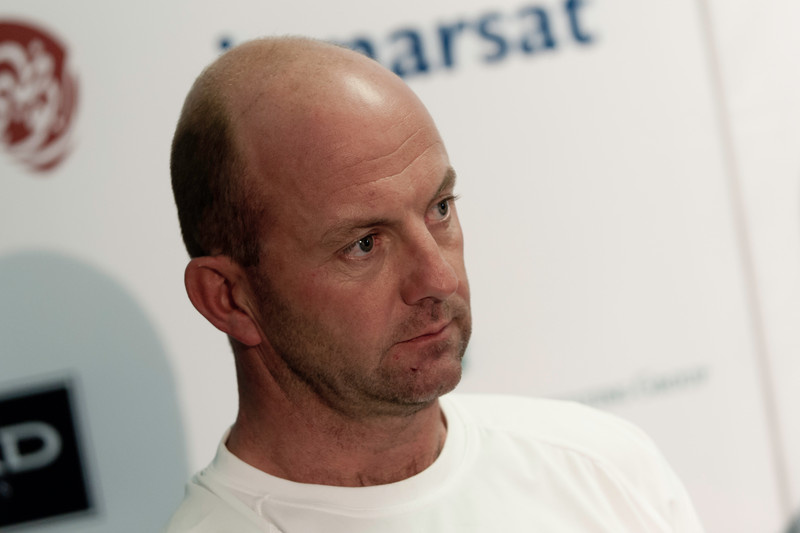
On the other hand, her boat attracted the attention of specialists, distinguishing itself from other «Wolves» yachts by striking details.
Let's stop at two of them. The upper deck of the Abu Dhabi now has no developed deckhouse - it is actually made as a half tank. Its gradual ascent to the DP and midship has allowed it to comply with rather strict VO 70 class rules on minimum height of undercut space. Only in front of the most similar hatch does the deck turn into something like a minimum deckhouse.
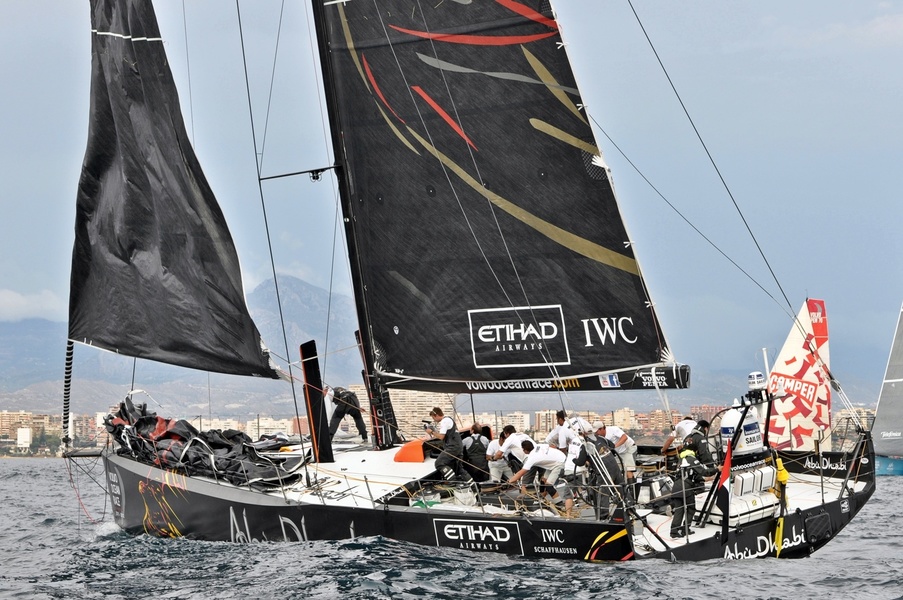
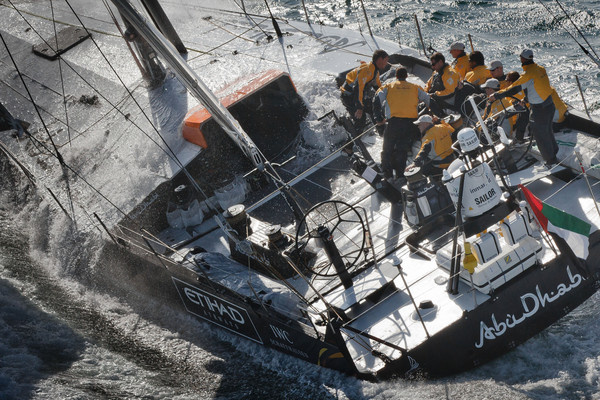
What did this design do?
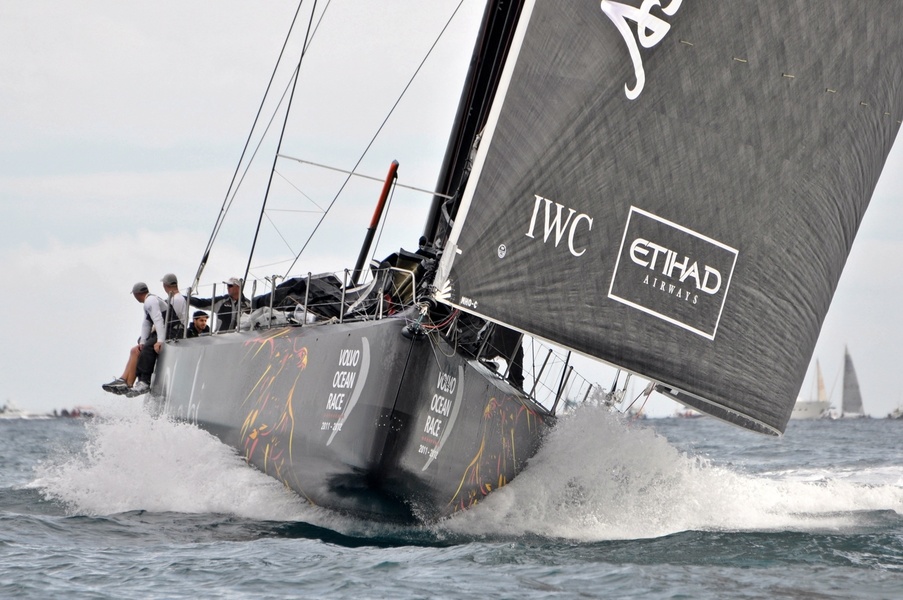
The second important feature of the boat is its highly developed bow volume. Among all the boats of this season, Abu Dhabi has the most complete bows. To understand why this was done, I asked the president of Farr Yacht Design Patrick Shaunessy, whom I met during the finish of the last Volvo Race regatta in
Another point about the design of the yacht is that it is equipped with the shortest porters. Pat commented that, according to his design bureau, the aerodynamic resistance of a high-deck (non-working) centreboard «is more» expensive than the reduced efficiency of shortening it, which also reduces the wet surface.
In short, all six teams, their captains and participating yachts look like this. Alas, not all of them were lucky from the start. The first stage was tough - only half of the fleet reached the finish line in Cape Town without any breakdowns.
And the old rule is that the first person to come to Cape Town wins the regatta.
So what's Telefonica?
Let's see...

